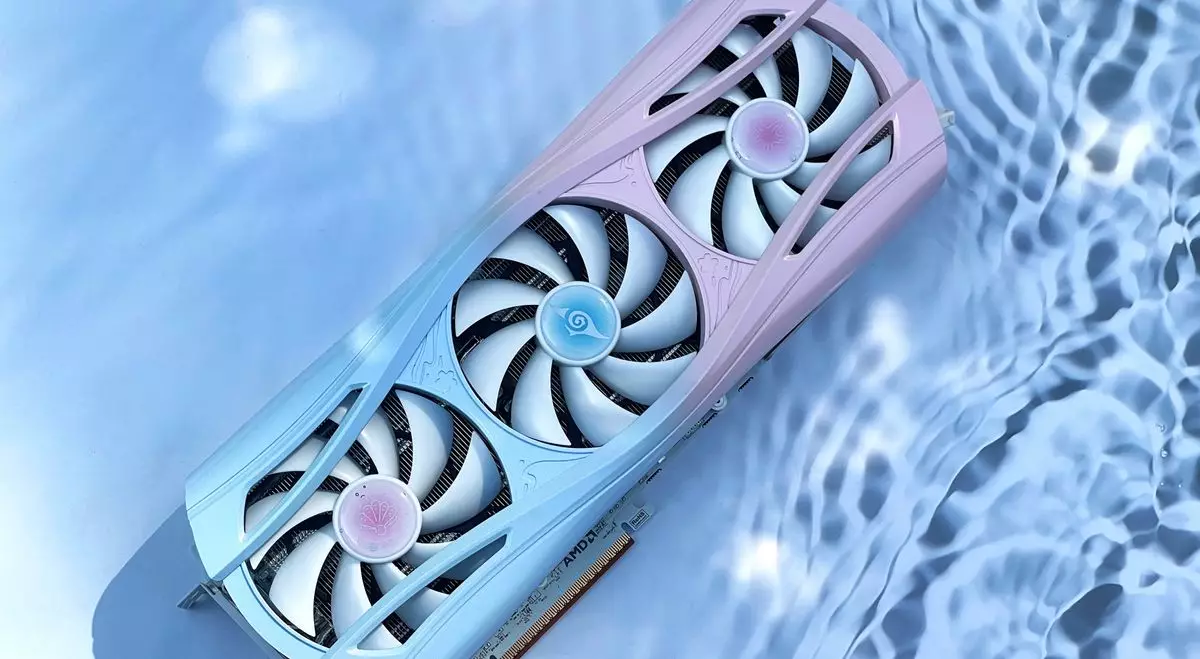The graphics card market is far from a smooth ride, as evidenced by the recent launches of AMD’s Radeon RX 9070 and 9070 XT models. While AMD’s offerings have undeniably generated buzz, concerns over availability and pricing have dominated discussions among consumers and market analysts alike. As AMD strategizes to stabilize its supply chain and ensure availability close to the Manufacturer’s Suggested Retail Price (MSRP), a deeper look at the complexities of the graphics card ecosystem reveals both challenges and opportunities ahead.
Unlike their NVIDIA counterparts, which have faced extreme supply issues with their RTX 50-series cards, AMD’s graphics cards are selling out quickly, yet their stock levels are slightly less chaotic. According to AMD’s David McAfee, the company’s priority remains the restocking of their partners to ensure that consumers have access to their products without stratospheric price hikes. The sentiment shared by industry figures like Yeston, a Chinese graphics card manufacturer, suggests that supply is expected to stabilize “after April,” which may provide hope for gamers worldwide desperate to upgrade their rigs.
The Supply Chain Dilemma
One of the core challenges facing AMD is the intricate relationship between chip manufacturers and graphics card makers. McAfee explains that while AMD sells CPUs directly, it employs a different model for GPUs—supplying chips to third-party manufacturers (AIBs) that decide the final product designs, pricing, and distribution mix. This results in a scenario where AMD does not exert direct control over how its products are marketed and sold, a fact that could significantly affect consumer experience and ultimately brand loyalty.
In a market characterized by fierce competition, the behavior of AIB partners becomes crucial. Some cards may be aimed at the MSRP, while others flaunt additional features targeted at premium segments. As a result, consumers may find themselves confused or frustrated when searching for a card that fits their budget. As of now, it’s clear that AMD has chosen a path that relinquishes a degree of control over its products but opts for partnerships that can ultimately serve different market segments.
This duality between control and partnership offers AMD a complex opportunity: to reinforce its brand as the champion of affordability while also catering to high-end specifications. The challenge lies not just in meeting current demand but in nurturing long-term relationships with both consumers and AIBs, ensuring that there’s something for everyone without unfavorable pricing trends.
The Impact of Market Demand
Reflecting on market demand, McAfee claims the launches of the RX 9070 and 9070 XT have been monumental, adding credence to the idea that the pressure to meet consumer needs is substantial. With a healthy backlog of pent-up demand, anticipating how many GPUs AMD can effectively supply in the near future is essential. The fear of a situation reminiscent of previous years—where availability was scarce and scalpers reigned—lingers in the minds of consumers, prompting questions about when purchasing a graphics card will again feel like a common consumer experience rather than an arduous quest.
The ideal scenario would involve consumers having unrestricted access to AMD’s next-generation GPUs in a matter of clicks, a milestone that has eluded the graphics card market for years. The expectation is that normal pricing and availability will return eventually, but AMD, alongside its competitors, must navigate a landscape riddled with speculation, unmet expectations, and shifting consumer demands.
What’s Next for AMD?
Looking ahead, the stakes for AMD could not be higher. It must strike a balance between adequate supply and maintaining a favorable price point to prevent drifting into a territory where prices are artificially inflated. As McAfee articulated, the challenge is undoubtedly multifaceted; ASIC shortages, supply chain hiccups, and market competitiveness all play a part in defining the company’s trajectory in the GPU arena.
Feedback from users and trends in sales over the upcoming months will dictate not only AMD’s responses but also shape the broader graphics card landscape. Will AMD roll out more of its reference designs in response to market demand? Or will it continue relying on its AIB partners to navigate the complexities of pricing? Each decision will either fortify AMD’s competitive edge or risk alienating potential customers who crave reasonable prices and reliable availability.
So while AMD aims for optimal supply conditions, the pursuit of balance in pricing, availability, and product diversity will define its success. The next steps they take could set the tone for the future of graphics cards, and the world’s gamers are undeniably watching.

